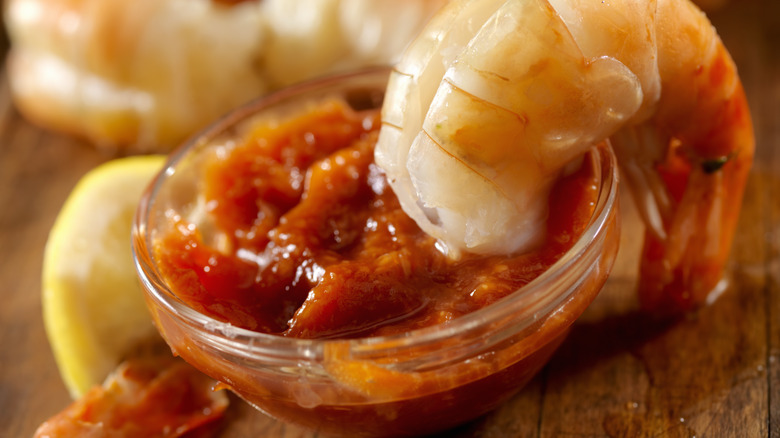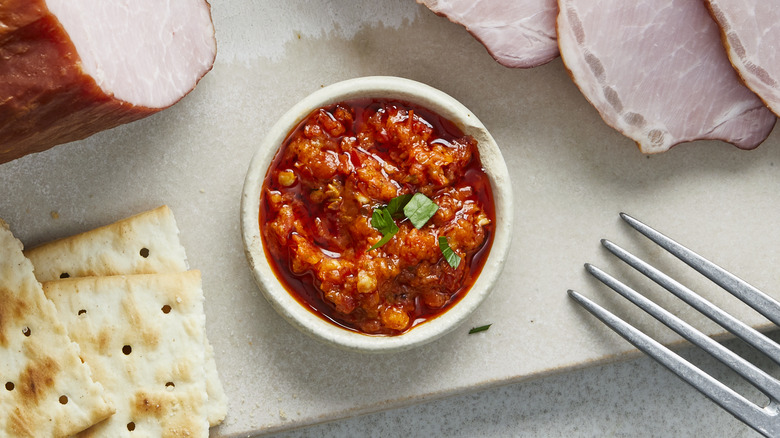For Elevated Cocktail Sauce, Spice It Up A Notch
Cocktail sauce, with its classic blend of ketchup and horseradish, is a staple companion to seafood, delivering a characteristic touch of spice. However, that spice can be a bit one-note as it takes the form of the sinus-clearing punch that horseradish is known for. Luckily, transforming this condiment from an austere accompaniment to a vastly more flavorful condiment can be achieved by introducing chili paste. This addition can not only introduce a different kind of spiciness but also brings forth additional acidity, occasional fermented undertones, and a delightful change in texture.
In its traditional form, cocktail sauce can sometimes fall victim to predictability, relying heavily on the unmistakable heat of horseradish along with the strong sweetness and mild acidity of ketchup. While these flavors are undeniably satisfying, their simple nature can leave the sauce lacking the complexity that a well-crafted condiment should possess. Enter chili paste — a dynamic and international family of foods that not only augments the heat quotient but also contributes a myriad of additional flavors.
Case in point: Chili paste brings acidity into the mix, offering a pronounced vibrant counterpoint to the sweetness of ketchup. This acidity not only brightens the overall flavor profile of the cocktail sauce but also complements the natural brininess of seafood. Fermented notes present in many chili pastes further deepen the complexity, adding a savory depth that enhances the overall umami. The introduction of texture is another notable transformation — the chunky consistency of many chili pastes gives a fuller body to cocktail sauce.
Spicy options abound
Incorporating chili paste into cocktail sauce is a simple process. Begin with a base of your preferred cocktail sauce recipe, whether homemade or store-bought. Start conservatively with the addition of chili paste, tasting and adjusting until the desired level of spiciness is achieved. Stir well to ensure even distribution of flavors and allow the sauce to meld for a brief period, letting the ingredients harmonize.
When it comes to choosing the right chili paste, the possibilities are as diverse as the cuisines from which they hail. The key is to understand what flavor profile you're going for, as various chili pastes bring with them not just heat but the favored spices and flavors of their cuisines. Some are powerfully sour and spicy while others rely on the warmth of ground spices or bright herbs to round out the experience.
For instance, sambal oelek, hailing from Indonesia, brings a bold and fiery kick from red chilis. But that sauce is also a strong transmitter of vinegar and carries forth a welcome savory note from the occasional inclusion of funky shrimp paste. North African harissa, on the other hand, introduces a smoky, aromatic complexity thanks to the litany of spices and herbs included. For those seeking a deep savory umami undertone, try Chinese doubanjiang, a spicy paste of fermented soybeans, broad beans, and chilies that is popular in Szechuan cuisine. There are, though, myriad other chili pastes from around the world, so take the time to seek out these fascinating variations that can make cocktail sauce sing.

